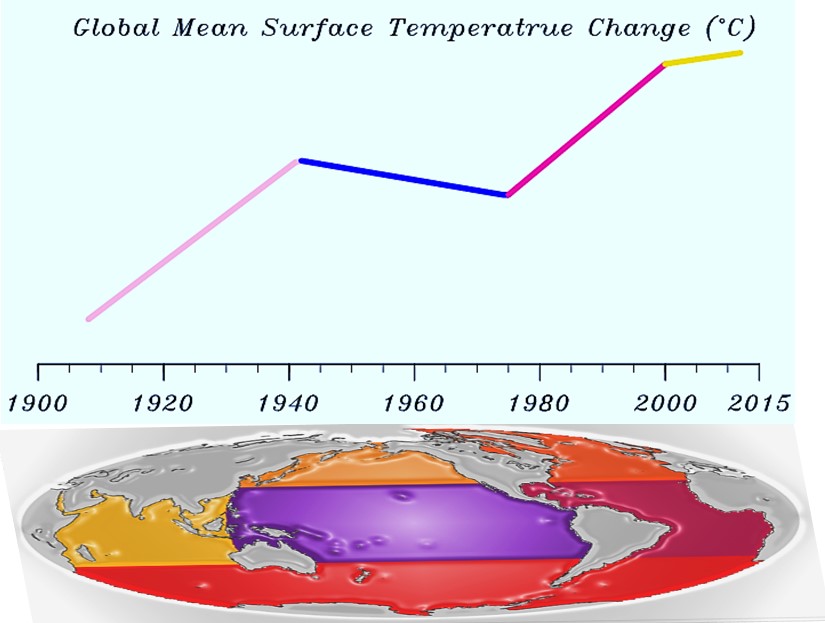The new finding of the importance of multiple ocean surface temperature changes to the multi-decadal global warming accelerations and slowdowns is supported by a set of computer modeling experiments, in which observed sea surface temperature changes are specified in individual ocean basins, separately. The results are published in “Distinct global warming rates tied to multiple ocean surface temperature changes”, in the June 12 online issue of Nature Climate Change (https://www.nature.com/nclimate/journal/vaop/ncurrent/full/nclimate3304.html ).

Schematic: Surface temperature changes in multiple oceans determine the global warming rate changes. (Image by HUANG Gang)
“Our results identify multiple ocean surface temperature change as a major driver for global mean surface temperature changes on multi-decadal timescales. The paramount importance of multiple ocean basins in determining the global warming rates provides a new insight to improving global and regional climate projections.” states the corresponding author HUANG Gang from CAS Institute of Atmospheric Physics.
"The results elucidate the relative contributions of individual ocean surface temperature changes to the multi-decadal global warming rate changes, and could help improve our understanding of global warming fluctuations under steadily increased emissions of atmospheric greenhouse gases.” says Jing-Jia LUO, the corresponding author of the study and climate scientist at the Bureau of Meteorology in Australia. “It reveals a fact that we need to explore climate change in a more global perspective. This could stimulate an integrated strategy and coordinated effort toward understanding the causes of regional ocean changes.”
“Our study provides a novel perspective for understanding and projecting individual ocean basin’s impacts on global warming,” explains co-author Dr. YAO Shuai-Lei from CAS Institute of Atmospheric Physics. “While the tropical Pacific was generally regarded as a key contributor to the multi-decadal global warming rate changes, other ocean basins, including the Indian Ocean, the Atlantic and the Southern Ocean, also exert important effects. ”
Contact: HUANG Gang, hg@mail.iap.ac.cn
